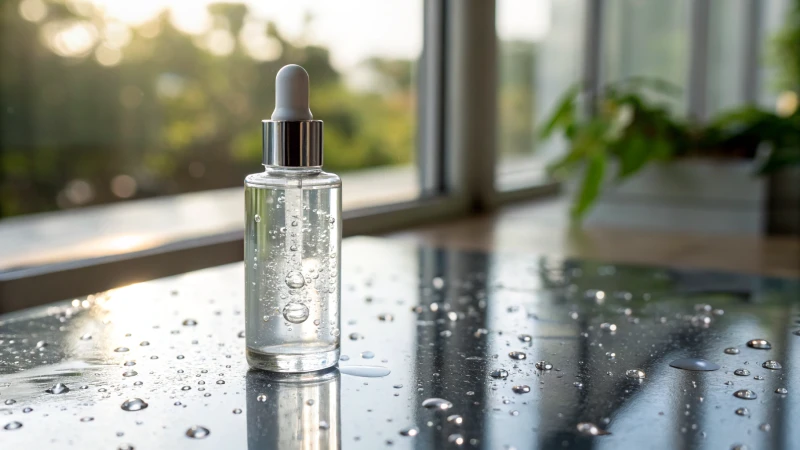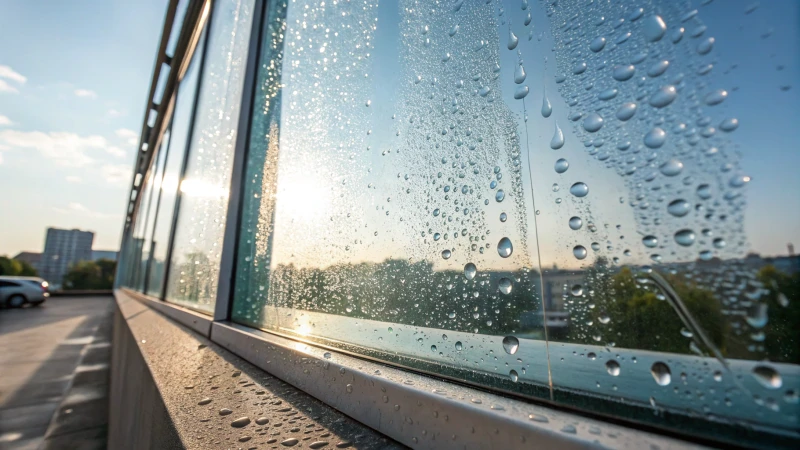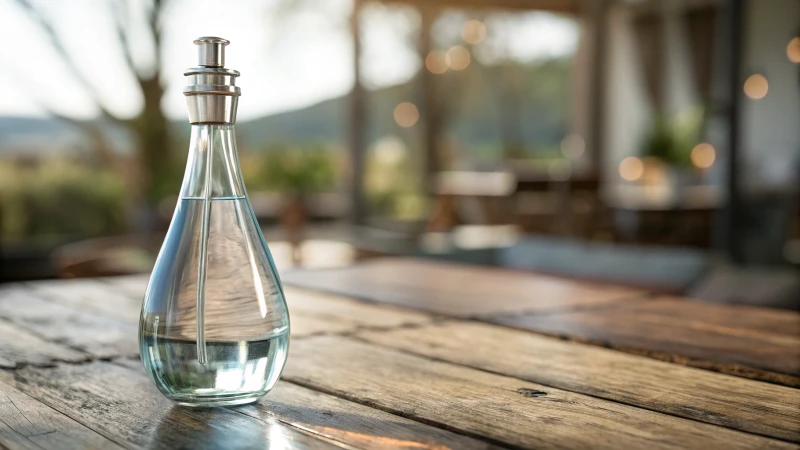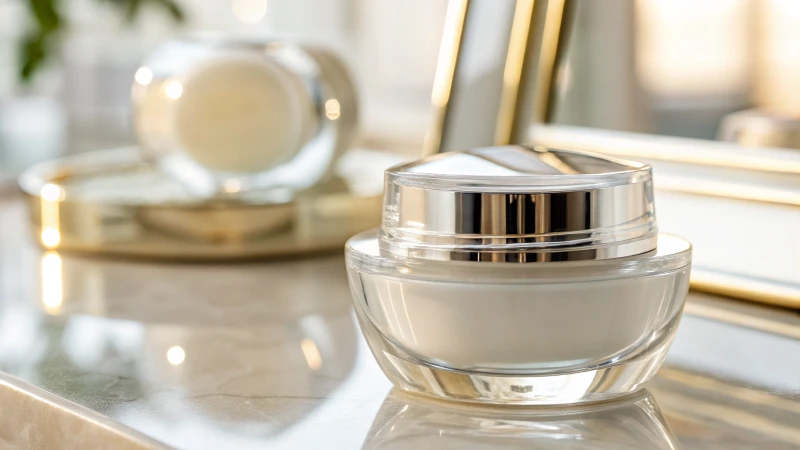
Imagine a world where your glass drop bottles clean themselves, staying crystal clear without the hassle.
Self-cleaning glass surfaces use innovative coatings to repel dirt and water, cutting down maintenance efforts. For drop bottles, they offer a sleek look and eco-friendly advantage but need careful assessment of cost, durability, and transparency.
It’s fascinating how this self-cleaning technology works—whether through hydrophobic coatings that cause water to bead and slide off or photocatalytic coatings that break down grime with sunlight. I remember the first time I saw it in action; it was like witnessing magic. But when it comes to applying this to drop bottles, it’s not just about the sparkle. We have to weigh the initial investment against the benefits, ensuring the coating’s longevity doesn’t compromise clarity. This could truly revolutionize how we package high-end cosmetics, combining luxury with sustainability.
Self-cleaning glass uses hydrophobic coatings to repel dirt.Vero
Hydrophobic coatings create a surface that repels water and dirt.
Self-cleaning glass surfaces are not suitable for drop bottles.Falso
They offer aesthetic and sustainability benefits, suitable for drop bottles.
How Do Self-Cleaning Glass Surfaces Work?
Imagine windows that never need cleaning. Intrigued? Let’s uncover the secret behind self-cleaning glass, where science meets everyday convenience.
Self-cleaning glass is coated with innovative materials that repel dirt and grime. These coatings work by either using hydrophobic properties to make water and dirt slide off or photocatalytic reactions to break down organic materials with sunlight, ensuring cleaner surfaces with less upkeep.

The Science Behind Self-Cleaning Glass
When I first heard about self-cleaning glass, I was fascinated by the idea of windows that practically clean themselves. It’s like having a superpower for your home or office! This magic lies in the advanced coatings applied to the glass, cutting down the effort needed for regular cleaning. Let me break it down for you:
-
Hydrophobic Coatings: Picture this—water droplets just rolling off your glass, taking dirt along for the ride. This is achieved through hydrophobic coatings, which create a rough microscopic surface that significantly reduces surface tension1. It’s like the glass is saying, "No thanks, dirt!"
-
Photocatalytic Coatings: These coatings use sunlight to spark a chemical reaction that breaks down organic dirt. One of the superheroes in this tech is titanium dioxide, a readily available and highly effective material.
| Technology | How It Works | Key Material |
|---|---|---|
| Hydrophobic | Repels water and dirt; water beads up and rolls off | Nanostructures |
| Photocatalytic | Breaks down organic materials with sunlight exposure | Titanium dioxide |
Application and Benefits
The versatility of self-cleaning glass is impressive. From grand architectural wonders to everyday consumer products like skincare packaging2, it offers several benefits:
- Aesthetic Appeal: Always having clear, spotless glass can make any product or building look pristine, boosting its visual appeal.
- Eco-Friendly: By reducing the need for harsh cleaning chemicals, it aligns with sustainable living practices—a win for Mother Earth!
- Durability: Although these coatings are tough, they aren’t invincible. With excessive handling or exposure, they might wear off over time.
Challenges and Considerations
Adopting self-cleaning glass isn’t all sunshine and rainbows. It comes with a few challenges, like a potential 15%-20% increase in costs, which might stretch some budgets. Also, certain coatings might slightly affect optical clarity—something to consider if transparency3 is critical.
Future Developments
Exciting advancements in ultra-thin coating technology are on the horizon, promising improved transparency and durability. This could be a game-changer not just for smartphone screens but potentially for industries like cosmetics packaging4, making them even more appealing.
Embracing these cutting-edge technologies could position brands as trailblazers in innovation, offering distinctive advantages in an ever-competitive market.
Hydrophobic coatings repel water on self-cleaning glass.Vero
Hydrophobic coatings create a surface that causes water to bead and roll off.
Self-cleaning glass uses titanium oxide for hydrophobic action.Falso
Titanium dioxide is used in photocatalytic, not hydrophobic, coatings.
What Are the Advantages of Using Self-Cleaning Glass in Drop Bottles?
Imagine a world where your drop bottles sparkle effortlessly, combining elegance with sustainability. Curious about how this could transform your brand?
Self-cleaning glass in drop bottles offers remarkable benefits like reduced maintenance, superior hygiene, and crystal-clear visibility, making it ideal for premium skincare and essential oils.

Understanding Self-Cleaning Glass
Ever find yourself wishing that those beautiful drop bottles stayed pristine without constant wiping? Well, self-cleaning glass might just be the answer. Imagine a magical coating that shrugs off dirt and grime. It’s not magic, though—it’s science! Self-cleaning glass uses hydrophobic5 or photocatalytic coatings to keep dirt at bay, leaving your bottles crystal clear.
Key Advantages of Self-Cleaning Glass
- Low Maintenance: Who wouldn’t love less cleaning? With self-cleaning glass, rain or a quick rinse is all it takes to wash away dirt. It’s perfect for those of us who’d rather spend time crafting the next big product than scrubbing bottles.
- Enhanced Hygiene: This is especially crucial for products like essential oils or serums where cleanliness is paramount. By reducing dirt buildup, self-cleaning glass helps keep your products as pure as intended.
- Sustainability Appeal: You know that guilty feeling when you use too many chemical cleaners? Self-cleaning glass minimizes the need for these, aligning perfectly with eco-friendly goals. It’s a win-win for the planet and your conscience.
Addressing Cost Concerns
Sure, the upfront cost is a bit higher, but think of it as an investment. You’re not just buying glass; you’re investing in peace of mind and brand prestige. For high-end brands, this tech-savvy edge can justify the initial expense by highlighting innovation and sustainability.
| Factor | Impact |
|---|---|
| Aesthetic Appeal | Maintains clarity and cleanliness |
| Cost Implication | Higher initial cost, less maintenance |
| Durability | Long-lasting with appropriate care |
Exploring Market Applications
If you’re in the luxury skincare or essential oil market, this technology could set your brand apart. Imagine being known not just for quality products but for packaging innovation too. It’s like adding a sprinkle of magic dust to your product lineup.
Challenges to Consider
Of course, every rose has its thorns. The durability of these coatings under frequent use and exposure to chemicals is a concern. Thorough testing will be key to ensuring long-term effectiveness and maintaining that premium edge.
Future Prospects
As advancements continue, newer solutions like ultra-thin coatings are on the horizon, promising even better durability and transparency. Brands that jump on these innovations early can lead the charge in packaging technology. Partnering with suppliers who offer advanced nano-thin coatings6 could keep you ahead of the curve.
Self-cleaning glass reduces maintenance costs.Vero
Self-cleaning glass requires less frequent cleaning, saving on maintenance.
Self-cleaning glass is unsuitable for skincare products.Falso
Self-cleaning glass enhances hygiene, making it ideal for skincare items.
What Should You Know Before Using Self-Cleaning Glass?
Imagine a world where your windows practically clean themselves—sounds like a dream, right? But before jumping on the self-cleaning glass bandwagon, let’s chat about some real-world challenges you might face.
Adopting self-cleaning glass can be tricky due to its higher costs, durability issues, and potential effects on optical clarity. Consider these factors carefully to ensure it fits your specific requirements and budget.

Higher Costs and Budget Implications
I remember the first time I looked into self-cleaning glass for my own projects. The allure of less maintenance was tempting, but then came the sticker shock. These advanced coatings can add 15%-20% to the cost, which was a bit of a budget buster for my standard projects. It’s definitely something to weigh if you’re watching your pennies. This might not fit the budget for standard applications7, especially if cost-efficiency is a priority.
Durability and Maintenance Concerns
While the idea of self-cleaning glass is to cut down on elbow grease, I’ve learned through trial and error that the reality can be a bit more complex. The coatings, which are essential for the glass to function as advertised, can wear down over time, especially if you’re cleaning them with harsh chemicals or touching them often. Users need to factor in potential reapplication costs that could crop up unexpectedly due to periodic reapplication8 needs.
Optical Clarity and Aesthetic Impact
Aesthetics are everything in design, right? I found that some self-cleaning coatings can slightly reduce the transparency of the glass. For projects where crystal-clear views were non-negotiable, this was a dealbreaker. So, choosing the right type of coating became crucial to keep my visual standards intact and maintain desired visual standards9.
Manufacturing and Supply Chain Challenges
The precision required for applying these coatings means not every supplier can handle them, leading to longer lead times or unexpected costs. Applying self-cleaning coatings requires specialized equipment and expertise, influencing supply chain efficiency. I learned the hard way that vetting suppliers who specialize in these coatings is non-negotiable if you want quality and reliability.
Table: Key Considerations in Self-Cleaning Glass Adoption
| Challenge | Description |
|---|---|
| Cost | Initial expense increase due to advanced coatings. |
| Durability | Potential wear from environmental exposure or frequent use. |
| Optical Clarity | Slight reduction in transparency that could affect aesthetic appeal. |
| Manufacturing Complexity | Requires specialized equipment and expertise, influencing supply chain efficiency. |
Chemical Compatibility Issues
I’ve stumbled upon a few headaches with chemical compatibility issues between self-cleaning coatings and other materials used in construction or packaging like silicone seals. It’s crucial to conduct compatibility tests10 to avoid nasty surprises from unexpected reactions or degradation.
Market Viability and Trend Alignment
In my experience, understanding your market is key; high-end segments focused on innovation and sustainability might justify the additional costs of self-cleaning glass. Plus, aligning with trends in eco-friendly solutions11 could leverage consumer interest, providing a competitive edge in premium markets.
Self-cleaning glass increases initial costs by 15%-20%.Vero
Advanced coatings for self-cleaning glass raise production expenses.
Self-cleaning glass enhances optical clarity.Falso
Some coatings may reduce transparency, affecting aesthetic appeal.
Is the Market Ready for Self-Cleaning Glass in Cosmetic Packaging?
When I first heard about self-cleaning glass for cosmetic packaging, my mind raced with possibilities. Could this be the next big thing in eco-friendly beauty solutions? Let’s explore whether the market is truly ready for this innovation.
The market’s readiness for self-cleaning glass in cosmetic packaging depends on balancing cost, sustainability, and consumer demand. While it’s a perfect fit for luxury brands, its wider adoption is challenged by cost efficiency and durability issues.

I remember sitting at my desk, a cup of coffee in hand, pondering the future of cosmetic packaging. Self-cleaning glass seemed like a dream come true—a blend of innovation and sustainability that could transform the industry. But, as with any groundbreaking idea, the devil is in the details.
Understanding Self-Cleaning Glass Technologies
Self-cleaning glass is treated with coatings that either repel water or use sunlight to break down dirt. These advanced coatings12 offer minimal maintenance, making them appealing for premium cosmetic products. However, balancing technology with consumer preferences is crucial.
Benefits of Self-Cleaning Glass for Cosmetic Packaging
I recall discussing the potential benefits with a colleague over lunch. We were both excited about how self-cleaning glass could elevate the aesthetic appeal and reduce environmental impact.
- Aesthetic Appeal: Always clean and clear appearance enhances customer experience.
- Eco-Friendly: Reduces cleaning chemical usage, appealing to sustainability-focused consumers13.
- Product Integrity: Maintains product’s visual quality by preventing dirt buildup.
| Benefit | Description |
|---|---|
| Aesthetic Appeal | Enhances brand image with spotless clarity |
| Eco-Friendly | Lessens environmental impact by reducing chemical use |
| Product Integrity | Preserves visual quality over time |
Challenges in Adoption
But let’s be honest—there are hurdles to overcome.
Cost Implications
Adding self-cleaning coatings can increase production costs by 15%-20%. This is significant for standard drop bottle pricing14, potentially limiting its use to high-end products.
Durability Concerns
Frequent handling or exposure to certain chemicals might degrade the coatings, affecting long-term usage. Ensuring coating resilience is vital for sustained effectiveness15.
Optical Clarity
Some coatings may slightly obscure transparency, a concern for products prioritizing visual appeal. Transparent clarity is essential, especially for cosmetic packaging markets16 focused on visual integrity.
Target Market Analysis
High-end skincare and luxury brands are the primary candidates for integrating self-cleaning glass due to their emphasis on innovation and sustainability. These brands can leverage this technology to set themselves apart in a competitive market. However, broader market readiness requires evaluating consumer willingness to pay a premium for enhanced packaging features.
Emerging Trends and Innovations
Nano-Thin Coatings
Recent advances in nano-thin coatings improve transparency and durability while reducing weight. These technological breakthroughs17 are ideal for precision applications like dropper bottles, indicating a promising direction for the cosmetic sector.
Cross-Industry Collaboration
Brands are exploring "smart packaging" solutions, combining self-cleaning with intelligent features such as UV protection. Developing tailored solutions through cross-industry partnerships18 can foster innovation within the premium segment.
Explore more about how these technologies are shaping future packaging trends.
Considerations for Manufacturers
Manufacturers need to address specific challenges such as precise coating application and ensuring supplier reliability. Partnering with experienced coating providers is essential for maintaining product quality and market viability. Supplier vetting19 and quality assurance processes can enhance production standards, ensuring successful adoption of this emerging technology.
Further insights on manufacturing processes and innovations in cosmetic packaging can be explored through detailed industry analyses.
The balance between innovation, cost, and market demand will determine the readiness of the market for self-cleaning glass in cosmetic packaging. Brands must consider these factors to effectively implement this groundbreaking technology in their product lines.
Self-cleaning glass reduces the need for cleaning chemicals.Vero
The coatings repel dirt, minimizing the use of cleaning products.
Nano-thin coatings increase the weight of cosmetic packaging.Falso
Nano-thin coatings actually reduce weight while enhancing durability.
Conclusione
Self-cleaning glass surfaces utilize advanced coatings to repel dirt and water, making them ideal for drop bottles. However, cost, durability, and optical clarity must be carefully evaluated.
-
Learn about how hydrophobic coatings work by reducing surface tension to repel water and dirt. ↩
-
Discover why self-cleaning glass is becoming popular in skincare packaging for its aesthetic and eco-friendly benefits. ↩
-
Understand how self-cleaning coatings might affect the transparency of glass surfaces. ↩
-
Explore how ultra-thin coatings are set to innovate the cosmetics packaging industry. ↩
-
Understanding hydrophobic coatings helps grasp how self-cleaning glass repels water and dirt effectively. ↩
-
Discover cutting-edge developments in coating technology enhancing product durability and aesthetics. ↩
-
Discover detailed insights into the cost implications of using self-cleaning glass to better plan your budget. ↩
-
Learn how to maintain self-cleaning glass for long-lasting performance and minimal upkeep. ↩
-
Explore how different coatings affect transparency and how to choose the best one for your needs. ↩
-
Understand how to test for chemical interactions to avoid potential material degradation. ↩
-
Stay ahead with insights into the latest eco-friendly trends influencing consumer choices. ↩
-
Discover various types of coatings that make glass surfaces self-cleaning, enhancing packaging appeal. ↩
-
Understand the motivations behind consumer preferences for eco-friendly packaging. ↩
-
Learn about the financial implications of adding self-cleaning technology to cosmetic packaging. ↩
-
Explore factors that influence the longevity of self-cleaning properties in packaging. ↩
-
Gain insights into why visual clarity is critical in cosmetic product presentations. ↩
-
Learn how nano-thin coatings enhance durability and transparency in packaging solutions. ↩
-
Explore opportunities for innovation through partnerships across different industries. ↩
-
Understand why choosing reliable suppliers is crucial for quality assurance. ↩



